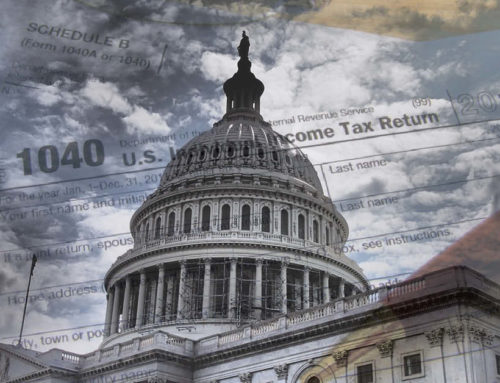Before they left town for August recess, the leadership of the House tax-writing committee released House GOP Listening Session Framework, Tax Reform 2.0. We looked at it and can’t help thinking of Yogi Berra: It feels like déjà vu all over again.
Details, Please?
Less than a year ago, the Ways and Means chairman released A Unified Framework for Fixing Our Broken Tax Code. At nine pages of mostly political rhetoric, it was long on ambition and light on details, and what details it did provide made clear that the plan would lead to a massive tax cut rather than deficit-neutral tax reform. Three months later, Congress passed a tax cut that the independent congressional scorekeeper found would cost taxpayers at least a trillion dollars (over 10 years) and possibly much more. This was the most sweeping change to the U.S. tax code since the Tax Reform Act of 1986, which was real reform and deficit neutral. To be fair, the 2017 tax law included a few important improvements to the tax code, but at its heart, it is mostly a set of deficit-financed tax cuts, primarily benefiting businesses and wealthy individuals. The tax system has many objectives, but its first requirement must be to adequately fund government operations. The long-term fiscal forecast for the U.S. government was grim before passage of the tax law and a bad budget deal; it’s noticeably worse now.
The other saying that applies here: “Past is prologue.” The new Framework is only two pages long, and most of that is rhetoric rather than any substantive information. The so-called Tax Reform 2.0 consists of a few broad proposals:
- Make permanent the individual income tax and small business tax cuts included in the 2017 tax law. Unlike the changes to the corporate tax code, those tax cuts expire after 2025, which was a gimmick to reduce the apparent cost of the package.
- Expand retirement and “family-friendly” savings plans:
- Expand access to employer-based retirement plans (e.g., 401(k) plans).
- Create new Universal Savings Accounts (USA accounts) to offer “a fully flexible savings tool.” Based on past proposals (from Senator Jeff Flake and Representative Dave Brat), this could be like a Roth-IRA, but with no restrictions on when the money could be withdrawn or for what purpose.
- Expand 529 education accounts to cover apprenticeship fees, home schooling, and student debt.
- New Baby accounts, to allow families to access existing retirement accounts, without tax or penalty payments, to cover expenses related to “welcoming a new child”, either by birth or adoption.
- Help brand-new businesses write off more of their initial start-up costs and “remove barriers to growth.”
This summary is based on the limited information in the Framework, plus public statements by leadership and knowledge of provisions that were proposed last year but were not included in the final legislation. There is almost no specific information about any component of this plan.
Separately, the Trump Administration is considering a proposal to index capital gains taxes for inflation. It seems likely that this proposal will become part of Tax Reform 2.0, whenever it sees the light of day.
More Lost Revenue
Tax Reform 2.0, like last year’s tax law, contains a few good ideas. For example, something like the USA account could be a big help to the majority of Americans who have little savings, and who see taxes take a big bite out of what little savings they have (although the benefits and costs will depend on details that are currently unknown). Expanding access to retirement plans is another good idea, as employer-based retirement plans are perhaps the most effective way to increase people’s savings.
But as with the tax law, the good ideas are small compared to the big-ticket items in Tax Reform 2.0. Making the personal and small business tax cuts permanent may be good politics, but it is expensive, which is why congressional leadership cynically left it out of the last tax law. The bottom line is we need to shrink the deficit, not expand it. The tax law already greatly expanded expensing of new capital investments; providing more expensing is going in the wrong direction. Indexing all capital transactions may be good tax policy (although extremely difficult to correctly implement and a recipe for gamesmanship), but indexing capital gains without indexing interest income and interest expense deductions simply represents a massive tax cut for the very wealthy. An analysis from the University of Pennsylvania Wharton School of Business concludes that indexing capital gains for inflation would reduce revenue by $102 billion over 10 years.
Taken as a package, Tax Reform 2.0 is just another big tax cut proposal that would expand our unsustainable annual deficits and accumulated national debt. It is not reform, it is not responsible, and we cannot afford it.










